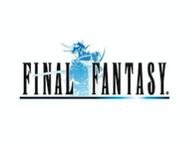Quiz Answer Key and Fun Facts
1. Some of these beings were found in the same book said to inspire the pen and paper RPG "Dungeons and Dragons", titled "Book of Imaginary Beings". Who was its author?
2. Who was the inspiration behind the Holy magic summon Alexander?
3. Anima is a powerful Aeon in "Final Fantasy X". What religion does Anima originate from?
4. In "Final Fantasy IV", Rydia meets the Queen of Eidolons, Asura. From what mythology does Asura spring from?
5. Always known as The Father or King of all Eidolons (Aeons, Espers, GFs or magically equipped) is the one and only Bahamut, who was described as a giant fish in what culture?
6. This next Summon has been in the series as an Esper in "Final Fantasy VI" Irvine's ultimate weapon in "Final Fantasy VIII", and a Fal'cie in "Final Fantasy XIII". Can you identify it's name and country of origin?
7. Which Eidolon that comes to Sazh in his time of need in "Final Fantasy XIII" is from Norse mythology?
8. Carbuncle made his appearance in "Final Fantasy V" and continues throughout the series. Carbuncle is also a monster in "Dungeons and Dragons". He is also named The Great Carbuncle in Nathaniel Hawthorne's refashioned parable from which Native American tribe's mythology?
9. Catoblepas, who first appeared in "Final Fantasy V", came from Roman mythology.
10. Ramuh wasn't always called Ramuh in the series. What was his original name, later changed before the original release of "Final Fantasy II"?
11. They've been modes of transportation in a few installments, the Eidolon creatures. In "Final Fantasy XIII" what two sisters combined into Shiva, Snow's motorcycle?
12. Hades, Greek ruler of the Underworld, made his first appearance in "Final Fantasy VIII".
13. Hecatoncheir is Vanille's Eidolon in "Final Fantasy XIII". From what mythology does this creature hail from?
14. In "Final Fantasy XII", a Seeq can be heard talking in Rabanastre buy Migelo's shop. What's the missing word?
"My friend says that o'er 430 revelers came through the Southern Plaza during the big fete! But even if you count the bards... 'Course, he could be countin' the ______ bards, too. That would be another matter altogether."
15. Some places are also referred to repeatedly in the "Final Fantasy" series. Feymarch or Feywood is one to name a few, in addition to always referring to woodland areas, they also contain a cloud that makes very dangerous enemies appear. In "Final Fantasy IV" though (for the psp), the Feymarch was like a pilgrimage for Rydia that lead to a couple powerful summons. In "IX" and "XII" our characters also faced the same thick substance traveling through woodland areas, (the Feywood and from the roots of the Iifa Tree respectively). What is this monster creating fog called in each of said installments?
Source: Author
girlygamer24
This quiz was reviewed by FunTrivia editor
kyleisalive before going online.
Any errors found in FunTrivia content are routinely corrected through our feedback system.
